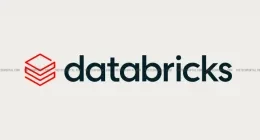Amit Phadnis, who has been with Cisco for nearly a decade, has now quit the company. Amit was working as the President of Engineering for Cisco, and heading a $11-billion business portfolio.
While the reason behind him leaving the company is not yet known, several sources suggest that Phadnis has quit for “personal reasons,” and that the decision was amicable to the India leadership. It isn’t immediately clear where he is headed from here on out.
Cisco confirmed the departure of Amit Phadnis from the company and said,
Leadership transitions are a very natural and normal part of a company transformation. While it can be hard to see good leaders go, it gives other talent a chance to step up and it gives the company a chance to bring in new perspectives.
Amit was one of the first managers to join Cisco when it started operations in India in 1999. When he joined, Phadnis served as director of engineering till 2004. He re-joined the company in the year 2007, taking on several senior level roles.
In his second stint at Cisco, where, as a core software group (CSG) head, he led “a team of 2,500+ engineers to drive innovations and product developments, architectural alignment, and integration with GTM (go-to-market) strategies in the routing, switching and wireless area.”
India is the second largest market for Cisco, where, the company is betting big on the Indian government’s key initiatives such as Digital India, Make in India, Skills India and Startup India. It has also placed big bets on the growing new businesses in India, with a $280-million corpus for investing in Indian startups.
He was also at the forefront of the company’s startup initiative, called LaunchPad. He worked with the first set of eight startups that graduated after a four-month programme at Cisco’s Bengaluru campus. These startups would be integrated into Cisco’s larger platform. The LaunchPad initiative aims to accelerate India based business-to-business (B2B) startups in deep tech and emerging technologies including artificial intelligence, machine learning, security, IoT and analytics.
The Tech Portal is published by Blue Box Media Private Limited. Our investors have no influence over our reporting. Read our full Ownership and Funding Disclosure →






